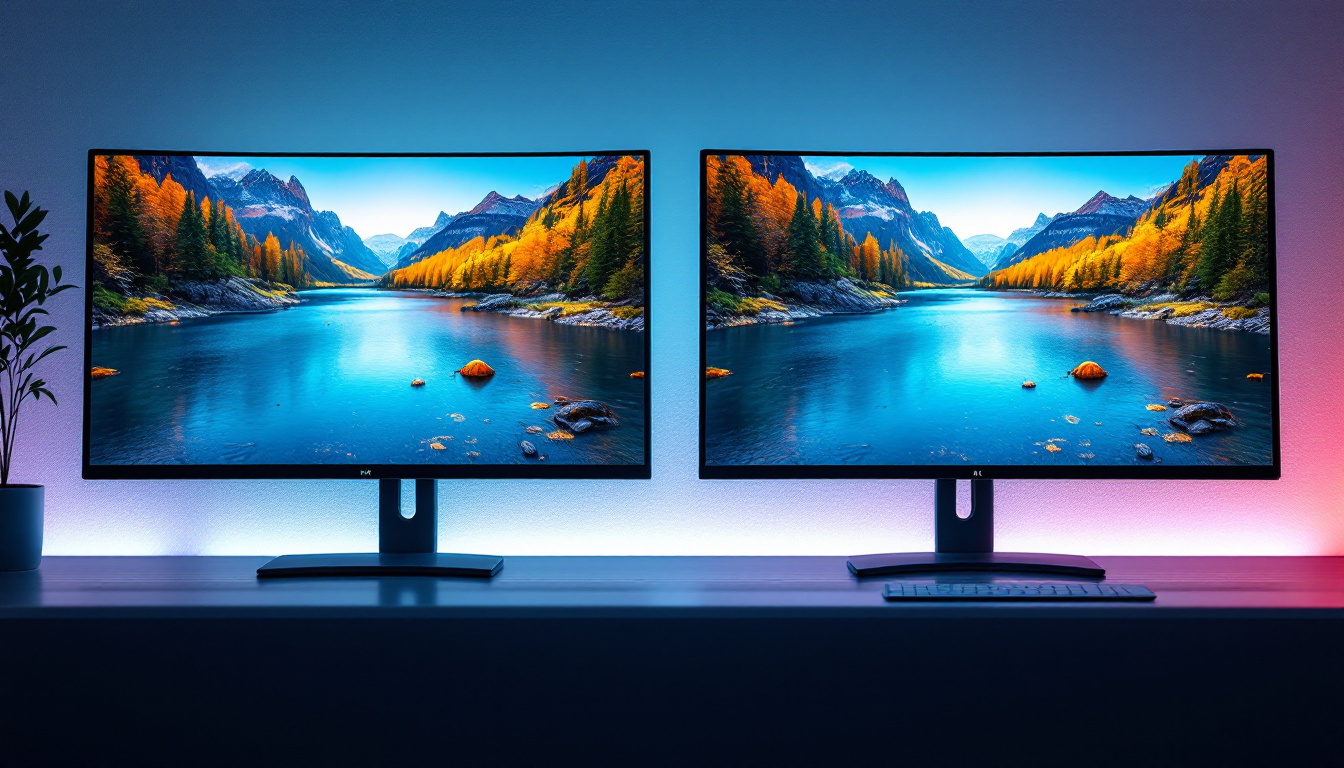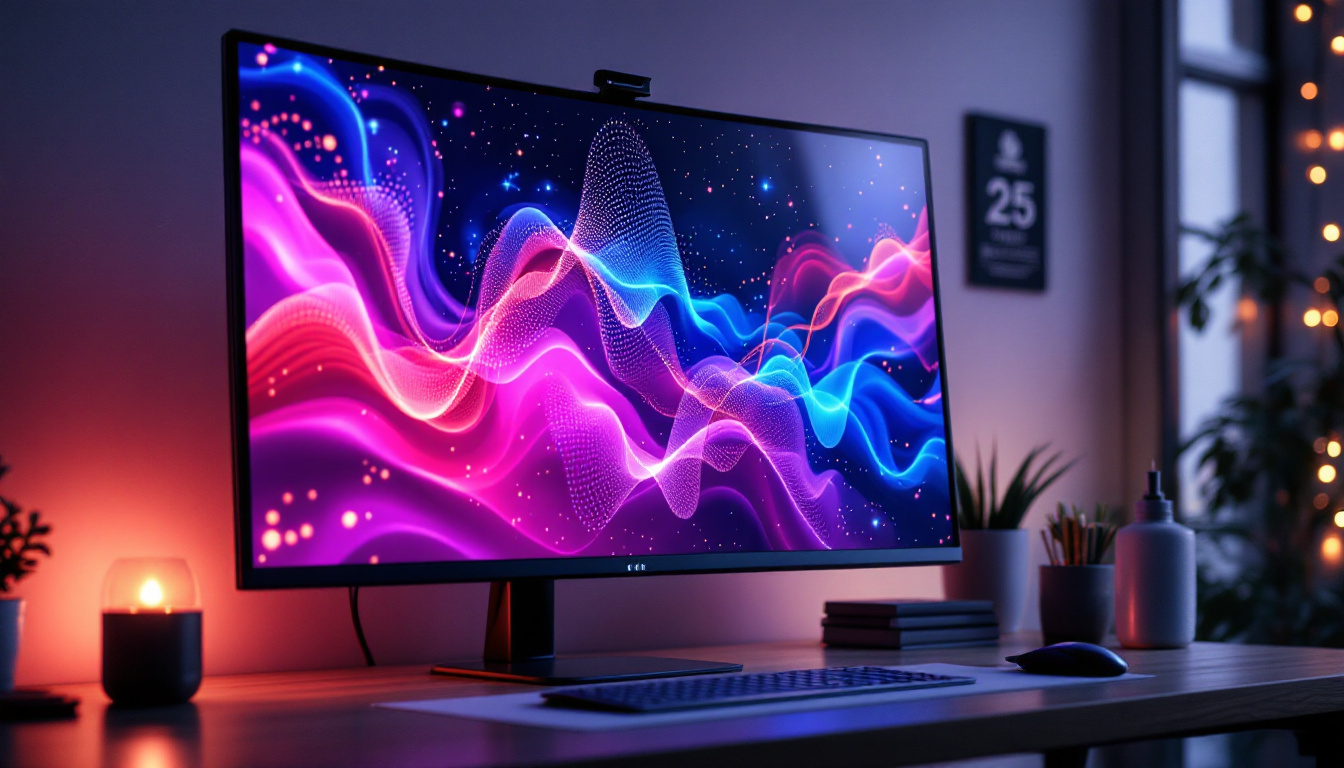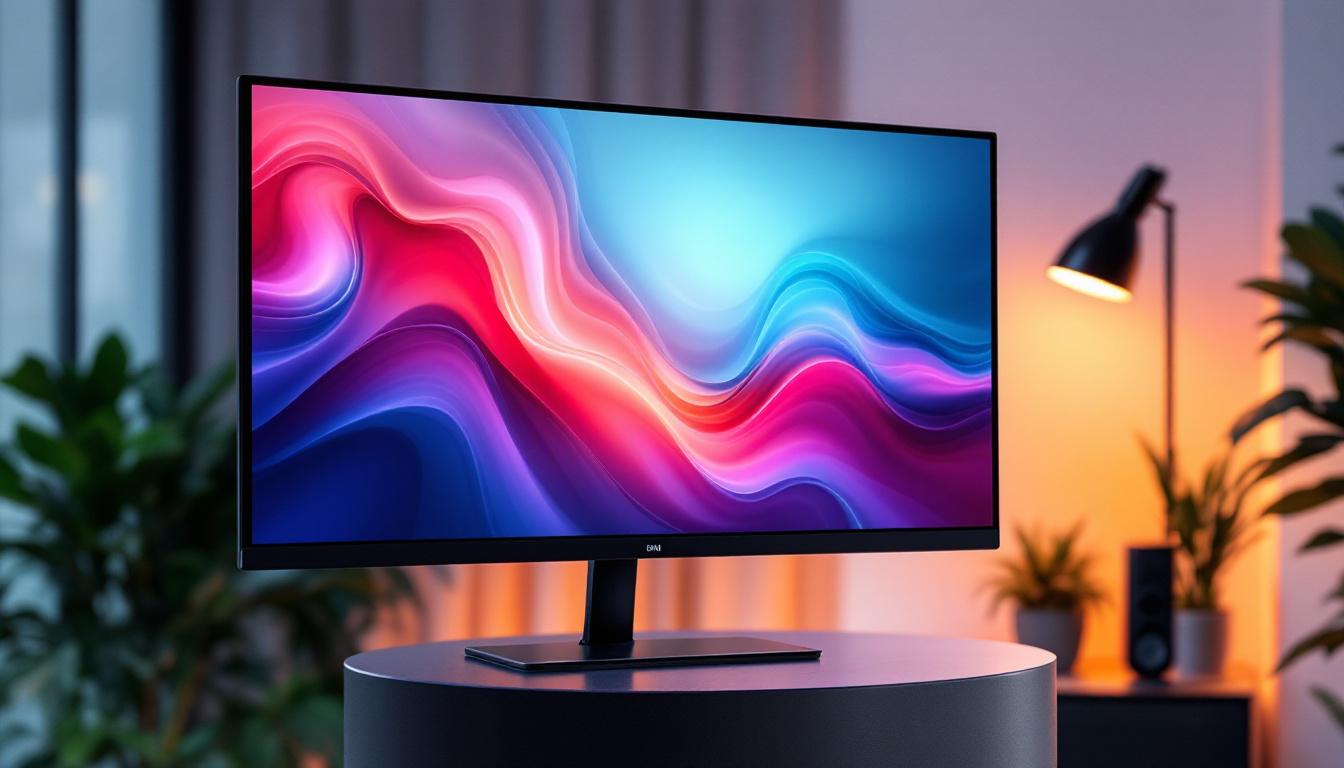4K Vs Full HD Monitor: LED Display Explained
In the world of digital displays, the terms 4K and Full HD have become commonplace. As technology advances, consumers are often faced with the decision of which display resolution to choose. This article will delve into the differences between 4K and Full HD monitors, exploring their specifications, benefits, and ideal use cases. By the end, readers will have a clearer understanding of which option may be best suited for their needs.
Understanding Display Resolutions
Display resolution refers to the number of pixels that make up the image on a screen. The more pixels, the higher the resolution, which generally translates to sharper and more detailed images. Two of the most common resolutions in the market today are Full HD and 4K.
What is Full HD?
Full HD, or 1080p, has a resolution of 1920 x 1080 pixels. This means there are approximately 2 million pixels on the screen. Full HD has been the standard for many years, offering a good balance between image quality and performance. It is widely used in televisions, computer monitors, and gaming consoles.
The clarity of Full HD is sufficient for most everyday tasks, such as browsing the web, watching videos, and playing games. However, as technology progresses, many users are seeking higher resolutions for a more immersive experience. Additionally, Full HD has been the go-to choice for many streaming platforms, which often optimize their content for this resolution to ensure smooth playback on a variety of devices. As a result, even with the emergence of higher resolutions, Full HD remains relevant, especially for those who prioritize performance and cost-effectiveness in their viewing experience.
What is 4K?
4K, also known as Ultra HD (UHD), boasts a resolution of 3840 x 2160 pixels, which is four times the pixel count of Full HD. This results in over 8 million pixels on the screen, providing an incredibly sharp and detailed image. The increased resolution is particularly noticeable on larger screens, where Full HD may appear pixelated.
4K technology is becoming increasingly popular in various applications, including gaming, video editing, and streaming services. As more content becomes available in 4K, the demand for 4K monitors continues to rise. Moreover, the enhanced detail offered by 4K allows for a more immersive viewing experience, making it ideal for cinematic films and high-action video games. Many modern gaming consoles and PCs are now equipped to support 4K output, and with the advent of HDR (High Dynamic Range) technology, the visual experience is further enhanced with more vibrant colors and improved contrast. This combination of high resolution and dynamic range is reshaping how we consume visual media, encouraging both creators and consumers to embrace the benefits of higher fidelity displays.
Comparing Image Quality
When it comes to image quality, the differences between Full HD and 4K are significant. The higher pixel density of 4K displays allows for greater detail and clarity, particularly in high-resolution images and videos.
Clarity and Detail
4K monitors excel in delivering stunning clarity and detail. This is especially beneficial for tasks that require precision, such as graphic design, video editing, and gaming. The additional pixels allow for smoother gradients and finer textures, enhancing the overall visual experience.
In contrast, while Full HD provides a clear image, it may not capture the same level of detail as 4K. This can be particularly noticeable in larger displays, where the limitations of Full HD can lead to a less satisfying viewing experience. For instance, when viewing expansive landscapes or intricate architectural designs, the finer details that 4K can render may be lost on a Full HD screen, making it less suitable for professionals who rely on visual fidelity.
Color Accuracy and Depth
Color accuracy and depth are also crucial factors when comparing these two resolutions. Many 4K monitors come equipped with advanced color technologies, such as HDR (High Dynamic Range), which enhances the range of colors and contrast levels. This results in more vibrant and lifelike images. HDR technology allows for deeper blacks and brighter whites, creating a more dynamic visual experience that can captivate viewers and provide a more immersive atmosphere.
Full HD monitors can also offer good color accuracy, but they may not match the depth and richness of colors found in higher-end 4K displays. For professionals in fields like photography and videography, the color performance of a monitor can be just as important as resolution. The ability to see a wider spectrum of colors can significantly impact the editing process, allowing creators to make more informed decisions about color grading and correction. Furthermore, as content creation continues to evolve, the demand for higher resolution and color fidelity will likely increase, making 4K an attractive option for both amateurs and professionals alike.
Performance and Hardware Requirements
Choosing between a 4K and Full HD monitor also involves considering the performance of the hardware being used. Higher resolutions demand more from the graphics card and processing power.
Graphics Card Compatibility
To fully utilize a 4K monitor, a powerful graphics card is essential. Many older graphics cards may struggle to deliver smooth performance at 4K resolution, especially in gaming scenarios. Users may experience lag or reduced frame rates, which can detract from the overall experience.
On the other hand, Full HD monitors are less demanding on hardware. Most modern graphics cards can easily handle 1080p resolution, making Full HD a more accessible option for users with mid-range systems.
Refresh Rates and Response Times
Another critical aspect to consider is the refresh rate and response time of the monitor. Refresh rate refers to how many times the image is refreshed per second, while response time measures how quickly a pixel can change from one color to another.
Many Full HD monitors offer higher refresh rates, which can be advantageous for gaming. A 144Hz Full HD monitor, for example, can provide a smoother gaming experience compared to a 60Hz 4K monitor. Gamers often prioritize refresh rates and response times, making Full HD a popular choice among competitive players.
Use Cases for Full HD and 4K Monitors
Different use cases can influence the choice between a Full HD and a 4K monitor. Understanding the primary purpose of the monitor can help in making an informed decision.
Everyday Use and General Productivity
For everyday tasks such as browsing the internet, working on documents, or streaming videos, a Full HD monitor is often sufficient. It provides a clear and sharp image without requiring high-end hardware. Additionally, Full HD monitors are generally more affordable, making them an attractive option for budget-conscious consumers.
Users who primarily engage in basic productivity tasks may find that the benefits of 4K resolution do not justify the additional cost and hardware requirements.
Gaming and Entertainment
When it comes to gaming and entertainment, the choice between Full HD and 4K can be more nuanced. For casual gamers, a Full HD monitor with a high refresh rate may be the ideal choice, providing smooth gameplay without the need for expensive hardware.
Conversely, for those who seek an immersive gaming experience with stunning visuals, a 4K monitor can elevate the experience. However, it is crucial to have a powerful graphics card capable of handling 4K gaming to avoid performance issues.
Professional Use Cases
In professional settings, such as graphic design, video editing, and photography, the choice of monitor can significantly impact the quality of work. 4K monitors are often preferred in these fields due to their superior detail and color accuracy.
Professionals who require precise visuals may find that the investment in a 4K monitor pays off in terms of enhanced productivity and the ability to create high-quality content.
Cost Considerations
Cost is a significant factor when deciding between Full HD and 4K monitors. Generally, 4K monitors are more expensive due to their advanced technology and higher resolution.
Initial Investment
The initial investment for a 4K monitor can be substantial, especially for high-end models with advanced features. Consumers should weigh the benefits of 4K against their budget and intended use. For some, the enhanced visuals may justify the higher price tag, while others may find Full HD to be a more sensible option.
Long-Term Value
While the upfront cost of a 4K monitor may be higher, it is essential to consider long-term value. As more content becomes available in 4K, having a monitor that can display this resolution may provide a better experience in the years to come. Additionally, 4K monitors may retain their value longer than Full HD monitors as technology continues to evolve.
Future-Proofing Your Setup
As technology advances, future-proofing becomes an important consideration for consumers. Investing in a 4K monitor may be a wise choice for those looking to stay ahead of the curve.
Content Availability
With the rise of streaming services offering 4K content, the availability of high-resolution media is increasing. Platforms such as Netflix, Amazon Prime Video, and YouTube are continually expanding their libraries of 4K content, making it more accessible for consumers.
As more creators produce content in 4K, having a monitor that can display this resolution will enhance the viewing experience and ensure that users can enjoy the latest media without limitations.
Technological Advancements
As technology progresses, 4K monitors are likely to become the standard. Investing in a 4K display today may provide users with a competitive edge in the future, ensuring compatibility with upcoming technologies and content formats.
Conclusion
In summary, the choice between a 4K and Full HD monitor depends on various factors, including intended use, budget, and hardware capabilities. Full HD monitors offer a solid performance for everyday tasks and casual gaming, while 4K monitors provide superior detail and color accuracy for professional use and immersive experiences.
Ultimately, consumers should assess their specific needs and preferences before making a decision. As technology continues to evolve, staying informed about advancements in display technology will help ensure that the chosen monitor remains relevant and effective for years to come.
Explore Cutting-Edge Visual Technology with LumenMatrix
Whether you’re seeking to elevate your professional workspace or enhance your home entertainment system, the right monitor can make all the difference. As you consider the leap from Full HD to 4K, let LumenMatrix guide you through the next evolution in display technology. As a leader in LED display innovation, LumenMatrix offers a diverse range of solutions, from Indoor and Outdoor LED Wall Displays to specialized options like Vehicle, Sports, and Floor LED Displays. Embrace the future with displays designed to create unforgettable visual experiences and communicate your message with unparalleled clarity. Check out LumenMatrix LED Display Solutions today and see the world in a whole new light.































